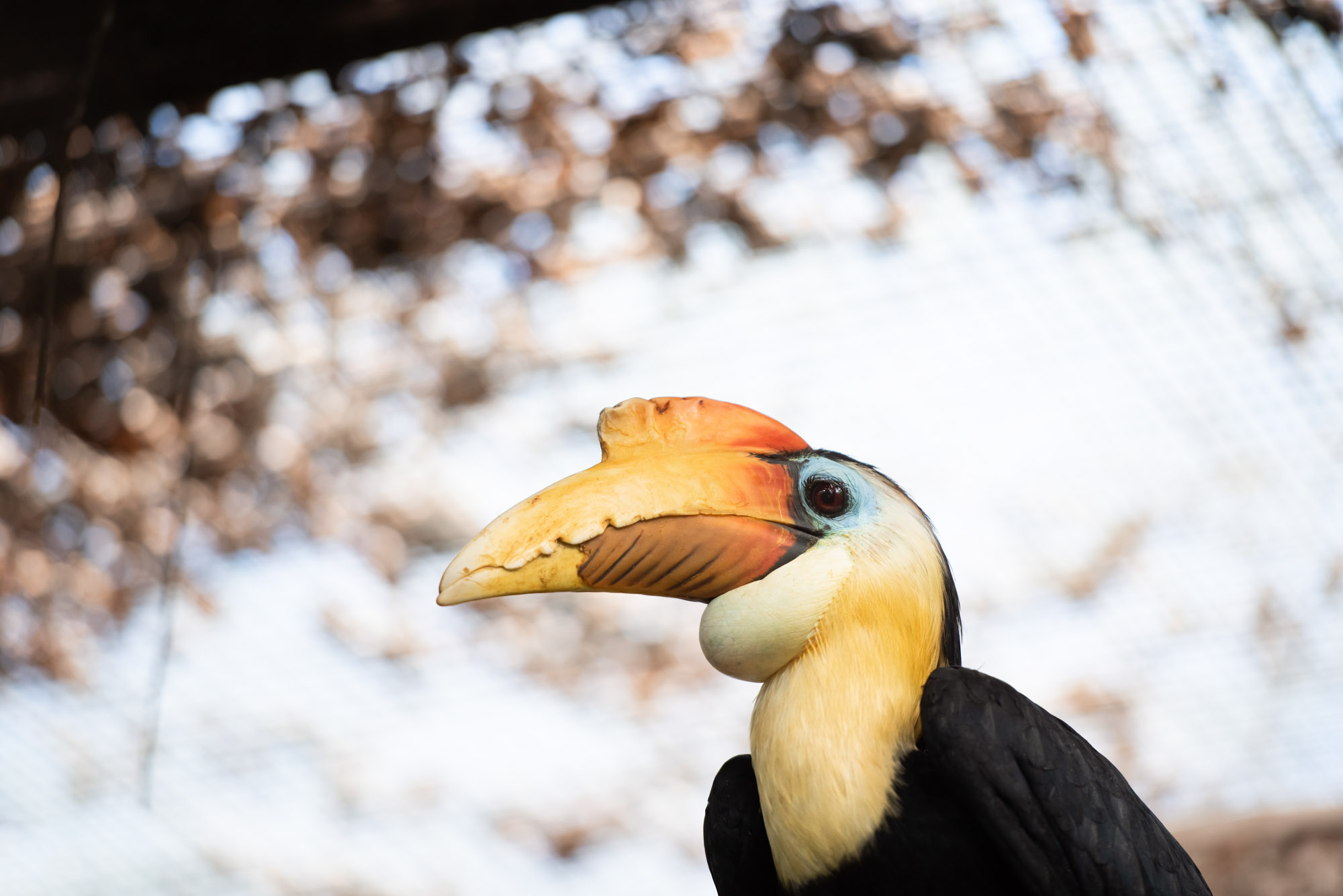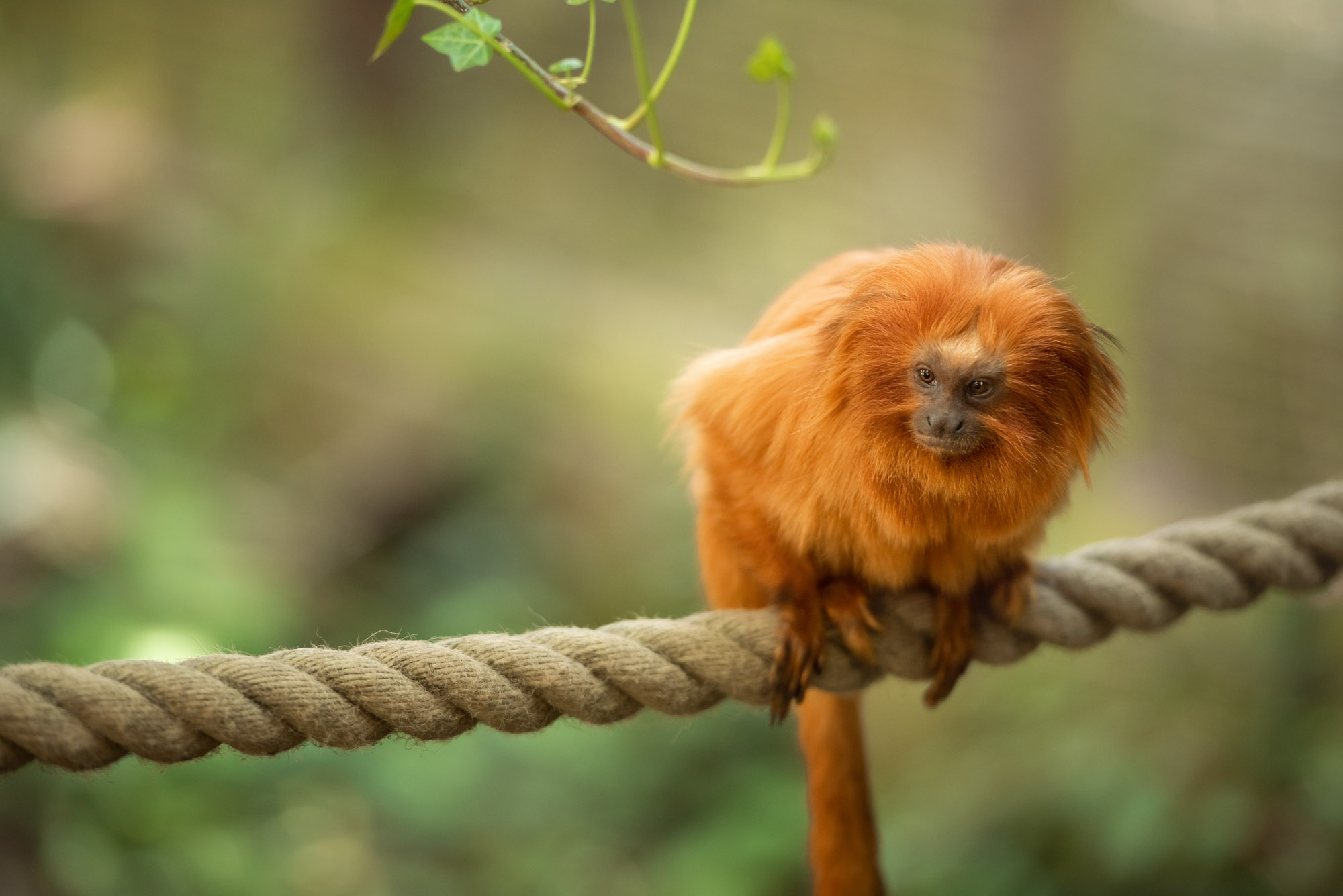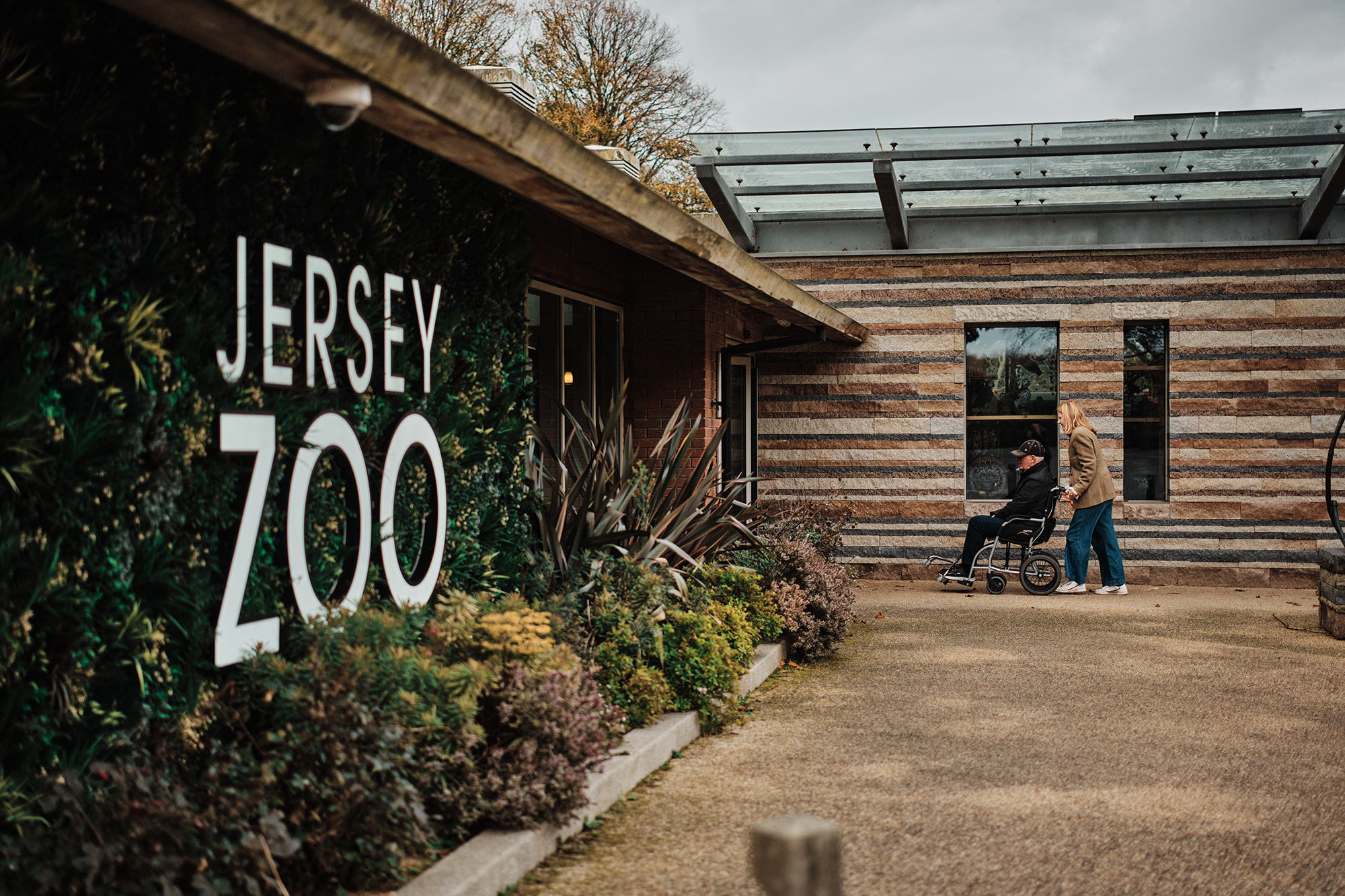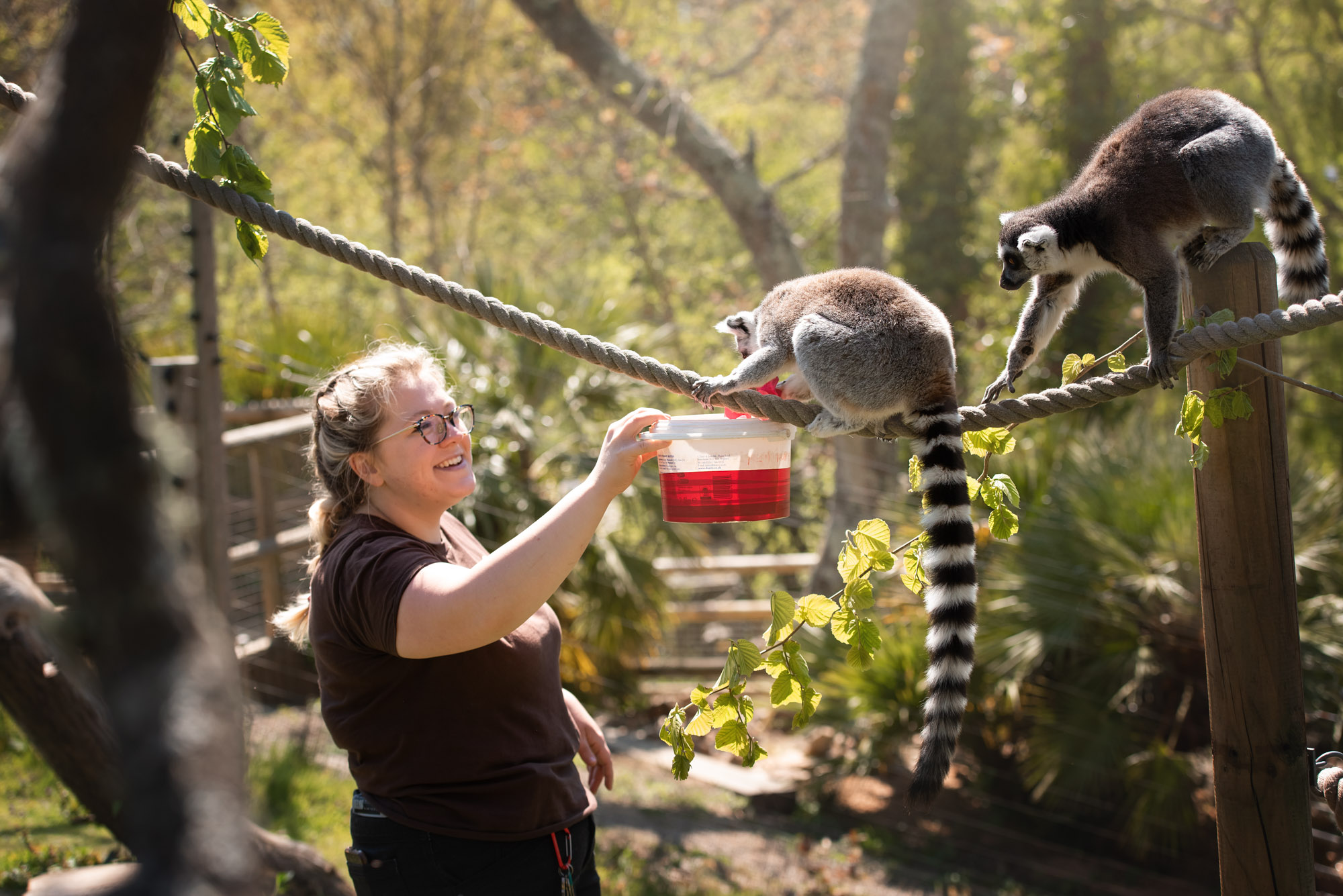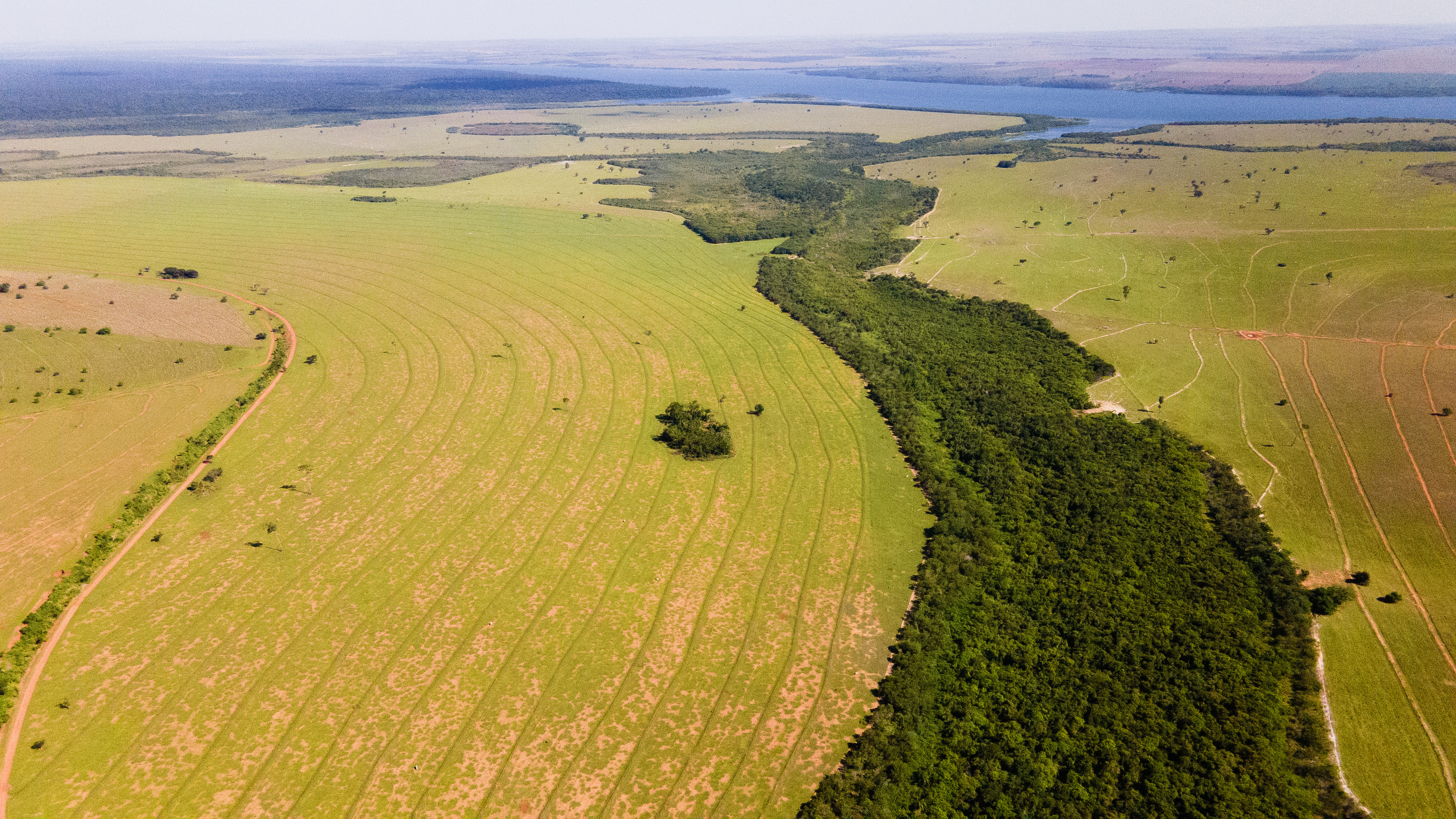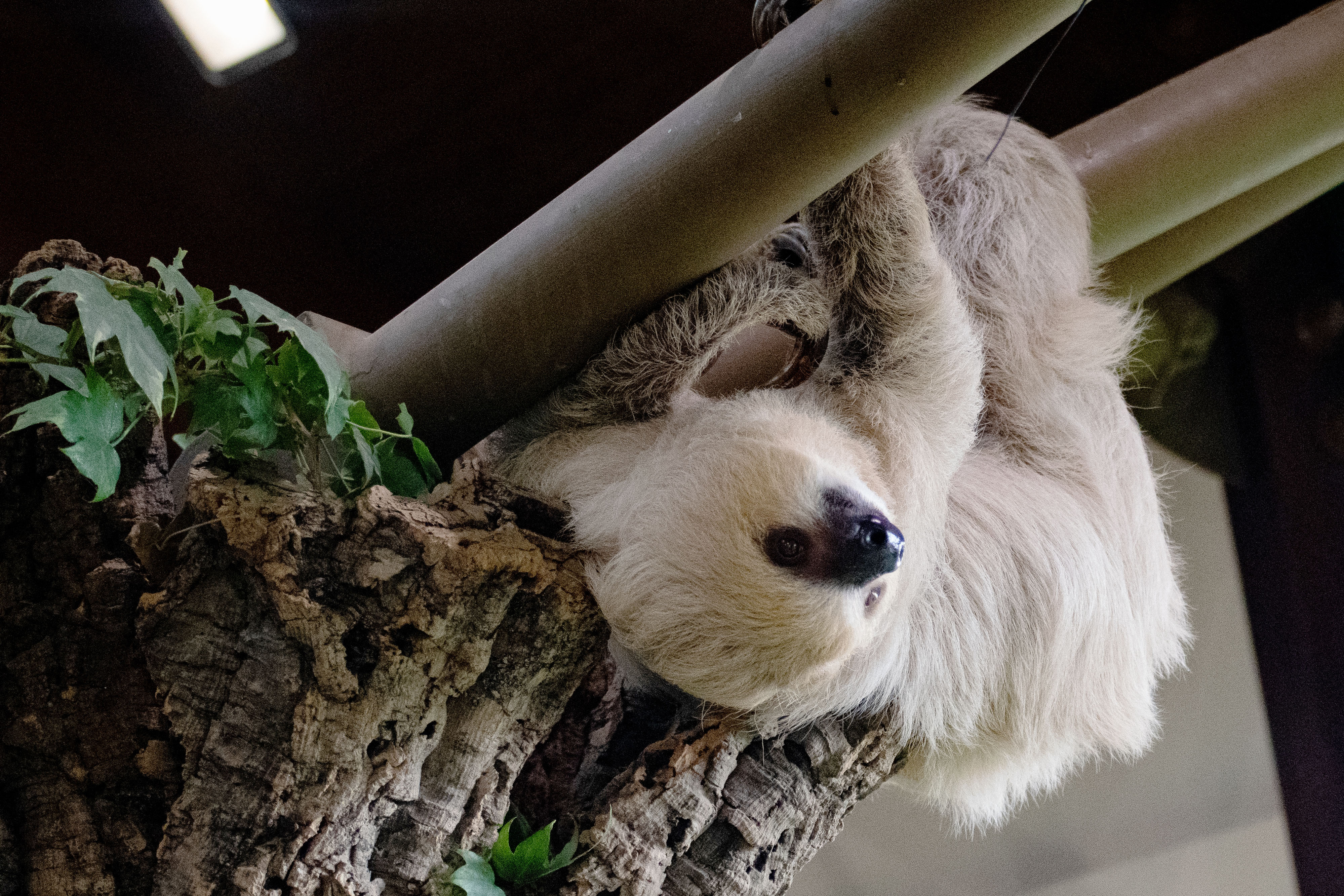Meet the acrobat of the primate world!
Find Hazel, our white-handed gibbon, living with the orangutans on their island home. White-handed gibbons, also known as lar gibbons, have been entertaining guests at Jersey Zoo since the first breeding pair arrived in 1997.
Hazel’s acrobatic swinging and awe-inspiring athleticism is guaranteed to put a smile on your face. Gibbons walk upright along branches almost like they’re walking the tightrope and use their long arms to swing from tree to tree like a trapeze artist!
Hazel may be an older lady but you’ll still see her keeping up with the younger orangutans!

15,000
Estimated wild population
10 metres
Gibbons can leap
44 years
Oldest gibbon in captivity
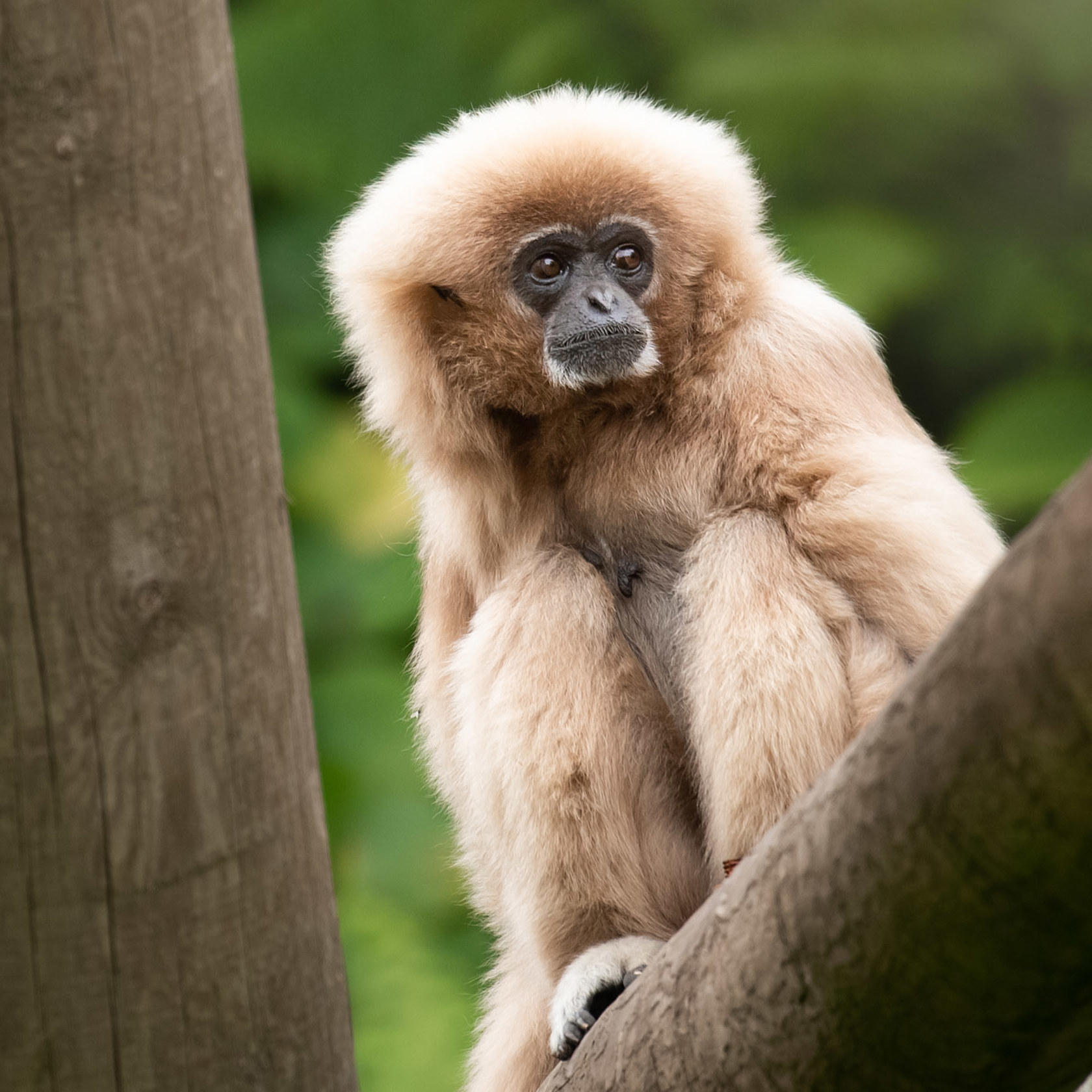
An uncertain future for the white-handed gibbon
Despite being regarded as the least-threatened of their species, the white-handed gibbon still faces an uncertain future in the wild. Like so many of the species we look after at Jersey Zoo, the ongoing destruction of their natural habitat is the biggest threat they face.
Rainforests in Northern Sumatra where white-handed gibbons are found are being cleared at an alarming rate to make way for farms, plantations and natural resource exploration.
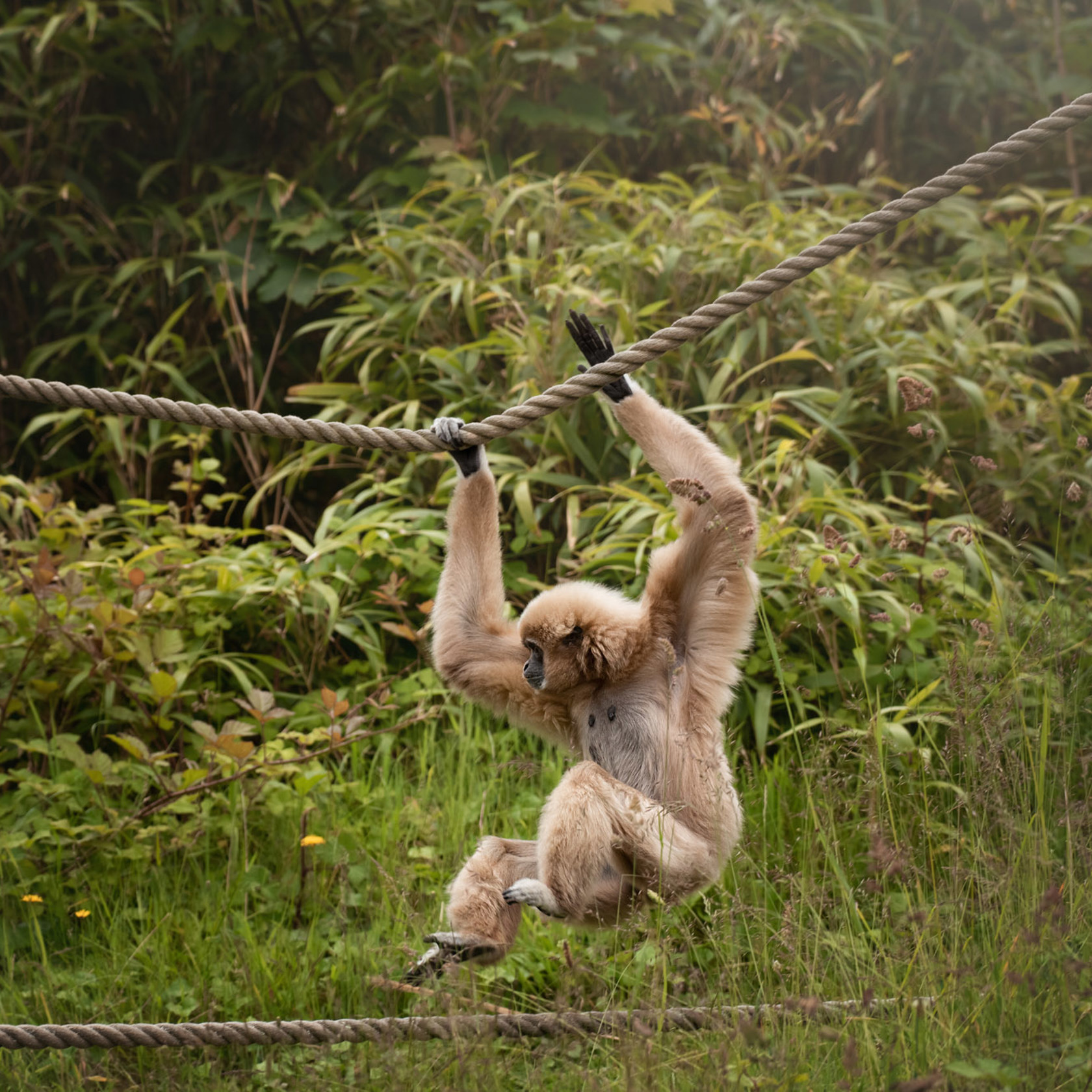
Captive research supports their wild counterparts
Durrell first began working with the white-handed gibbon in 1997, with the arrival of a breeding pair from Twycross Zoo. Since then, our team has focused on developing successful husbandry methods to safeguard the most threatened gibbon species from extinction.
Help us care for Hazel, the white-handed gibbon

